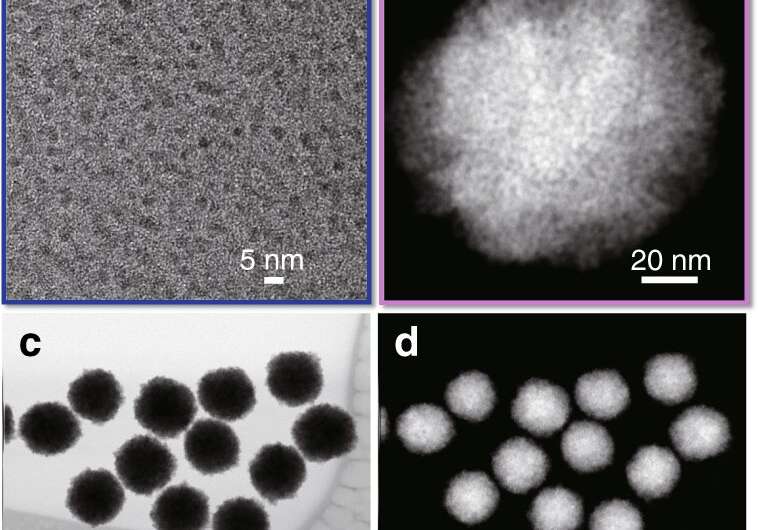Bio-inspired nano-catalyst guides chiral reactions

Many medicines are twisted molecules with two mirror image versions, but the body uses only one. Inspired by photosynthetic bacteria, a team at the University of Michigan built a catalyst that guides chemical reactions toward the right version of twisted molecules. It could lead to more efficient production of some medicines.
The curl in drug molecules, a property that's known as chirality, helps them to interact with similarly curved molecules in human cells. The molecule with the opposite curve is inactive or, in the worst case can be very toxic. Yet chemical processes usually give us both versions of chiral molecules, or enantiomers, in equal amounts.
"Chiral catalysts today have been optimized to work in liquids that are expensive and environmentally unfriendly. These catalysts can produce left- or right-enantiomers almost exclusively, but when we want to carry reactions in water, they are destroyed," said Nicholas Kotov, the Joseph B. and Florence V. Cejka Professor of Engineering, who led the team that designed and tested the new catalyst.
It would be cheaper and safer to run reactions in water. The catalysts developed by Kotov's team can do this. They are assemblies of mineral nanoparticles, made chiefly from zinc oxide. They mimic nanoscale organs in bacteria, and they are at least 10 times better at selecting a particular version of a chiral molecule than earlier catalysts of this type.
"Our chiral selectivity is consistently above 20% while the previous reactions of similar type barely broke 1%," said Kotov. "Twenty percent may not seem like much, but already it is technologically valuable because it substantially reduces the cost of the intended product."
For instance, some medications—which currently contain equal amounts of the active and inactive enantiomers—could be produced more efficiently with these catalysts.
"Cost savings are already possible because the catalysts are inexpensive, stable and reusable. Replacing organic solvents with water also makes a large difference both for economics and the environment."
This is how the catalysts work: the gaps between the chiral nanoparticles within the 0.0001-millimeter "supraparticle" are twisted, so they prefer to host molecules with a similar curve. The nanoparticles catch light and transform it into electrical charges, which are passed to the molecules in the gaps.
The molecules use the energy to form a new bond. The molecules with the correct twists spend more time inside the supraparticle, so they end up producing more of the twisted products.
The team is exploring how to improve the chiral selectivity further, perhaps by using twisted light.
The study is published in the journal Nature Communications.
More information: Si Li et al. Single- and multi-component chiral supraparticles as modular enantioselective catalysts, Nature Communications (2019). DOI: 10.1038/s41467-019-12134-4
Journal information: Nature Communications
Provided by University of Michigan




















